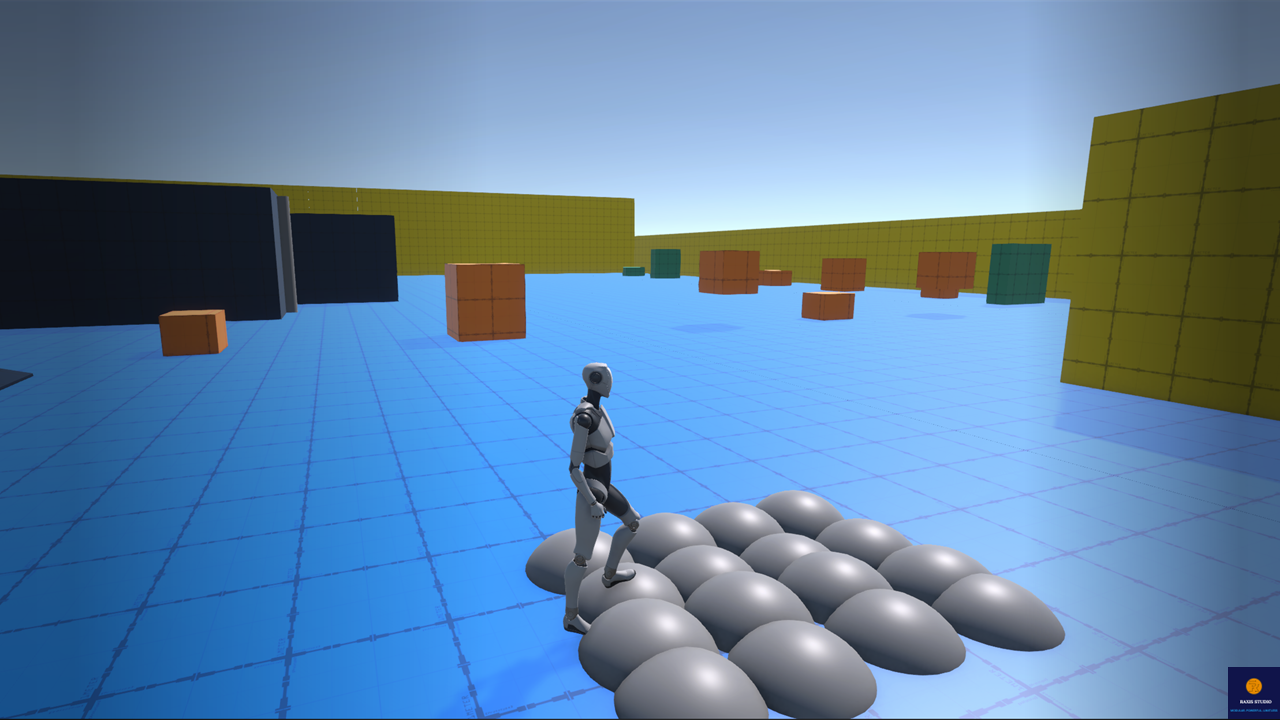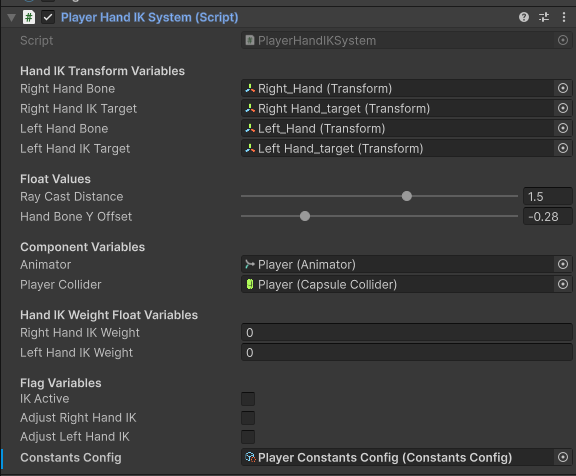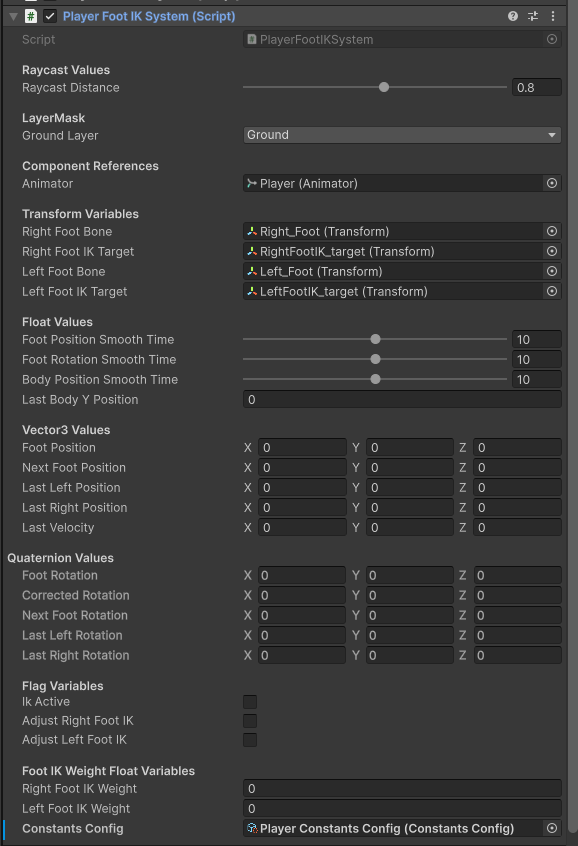Solving Terrain & IK Issues: Natural Foot and Hand Placement on Any Surface

Intro: The Hidden Detail That Sells Realism When players move through a game world, the smallest details often have the biggest impact. Floating feet or stiff hand interactions instantly break immersion. These details are notoriously difficult to fix — and yet they make the difference between a prototype and a polished experience. That’s why the Modular Third-Person Framework comes with a built-in IK System that handles both feet and hands, automatically adapting to terrain and interactions.
The Challenge: Immersion Breakers Without a solid IK system, developers face:
- Floating feet on slopes or stairs.
- Clipping legs on uneven terrain.
- Hands not reaching objects → doors open without the character touching the handle, or elevators activate without pressing a button.
- Time wasted writing custom raycasts and animation hacks.
The Solution – IK System in the Framework The framework’s IK System provides automatic, realistic adjustments for both feet and hands. Foot IK
- Raycast detection → adjusts foot position to match ground height and slope.
- Hip alignment → ensures body balance stays natural on uneven terrain.
- Seamless integration → works across locomotion states (walk, jog, sprint, crouch, crawl).
Hand IK
- Precise targeting → hands move directly to interactable points on objects.
- Dynamic interactions → works with doors, elevators, and any interactable that follows the IK pattern.
- Extendable logic → easily add IK for other interactions (switches, levers, terminals).
Beyond the Player Both Foot and Hand IK can be extended to:
- NPCs and AI characters.
- Creatures, robots, or mechanical rigs.
- Any object in the scene that requires natural positioning.
Configured entirely through ScriptableObjects, the system remains easy to tweak and scale.
Proof: Immersion in Action Without IK:
- Feet float above stairs.
- Doors open without hands touching them.
- Elevator buttons activate from thin air.
With the framework’s IK:
- Feet align smoothly to terrain and stairs.
- Hands naturally move to door handles and elevator buttons.
- Every interaction feels grounded in the world.
Developer-Friendly by Design The IK System follows the same architecture principles as the rest of the framework:
- Interface-driven → IIKSystem defines clear contracts (SetHandIKTarget, SetFootIKTargetOnTerrain, AdjustLimbPlacement, ResetAllIK).
- Event-driven communication → systems remain decoupled, no hard dependencies.
- Factory + State Pattern → integrates seamlessly into the movement state machine.
- ScriptableObjects → tweak ray lengths, offsets, and targets without touching code.
- Debuggable → detailed logging can be toggled on/off via ScriptableObjects for runtime diagnostics.
- Future-Proof Base → includes a BaseIKSystem class for extending IK logic beyond hands and feet while following the same structure.
- Dynamic Activation → IK can be enabled, disabled, or reset at runtime, ideal for cutscenes or temporary overrides.
Use Cases
- Third-person RPGs → characters walk naturally and interact believably with objects.
- Stealth games → precise IK ensures cover, vaults, and door use feel realistic.
- AI/NPCs → extend the same IK to enemies for world consistency.
- Non-humanoids → apply IK to claws, robotic arms, or mechanical parts.
Small Details, Big Immersion Foot and hand placement may seem like minor details, but they’re the polish that separates a simple controller from a professional framework. With the Modular Third-Person Framework, IK just works — on any surface, in any interaction, across any character.
👉 Get the Modular Third-Person Framework on the Unity Asset Store: Modular Third-Person Framework | Game Toolkits | Unity Asset Store





